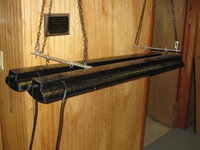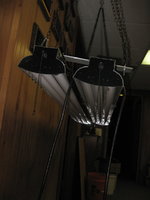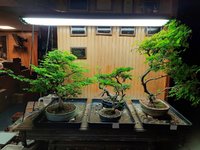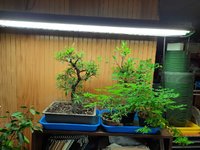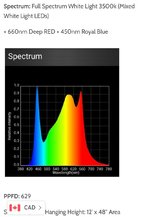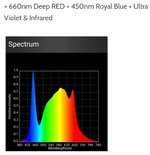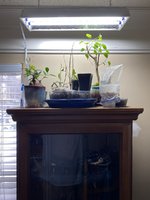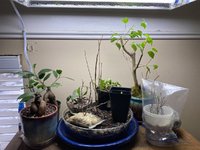ShadyStump
Imperial Masterpiece
I have a couple very similar to these from Sansi that I got used from my brother when he upgraded.I've been experimenting with GE growlight led with PAR 38 base(normal screw in bulbs). Basically it looks like a floodlight bulb. In my opinion, visually, these are the closest I've seen to natural sunlight. Unfortunately they are not cheap at 40+usd a pop. Picked these up at my local Lowes.
In my short time using them, I'm very happy with the performance. I had one initially and got a second because I was impressed with the light temperature and output.View attachment 416153
They can get VERY hot, but the light output is incredible.
It might help if we explain a little of the terminology.
PAR/PPF is the rating for how much photosynthetic light they put out. There are two methods of measuring this, and you need to know which one the manufacturer is giving you. If the don't specify, a little reasoning will let you figure it out.
First, there's the maximum PAR/PPF. This is measured at the exact spot under the light where the photosynthetically active radiation (PAR) is at it's highest. It will always come off looking like a very high number, but if you're lighting a big area vs a single tree it's not very helpful.
Second is average PAR/PPF. They essentially set the light up in a 2x2x2 foot grow tent, and measure the light at various points across the bottom and give you the mean. The number will appear lower, but will give you a much better idea of how it'll work for multiple trees.
There are many ways manufacturers can cheat to make the numbers look better, so stick with reputable brands until you get a better idea what you're looking for.
Color temperature tells you what ends of the visible light spectrum you're working with measured in degrees Kelvin. The sun on a clear day is pushing 7000 degrees K. The natural daylight lightbulbs are usually around 6000K.
Here's where it messes with your head. The higher the number, the cooler the color. As in high numbers lean more to the blue end of the spectrum. Lower numbers are softer, warmer light, more towards the red and yellow end.

